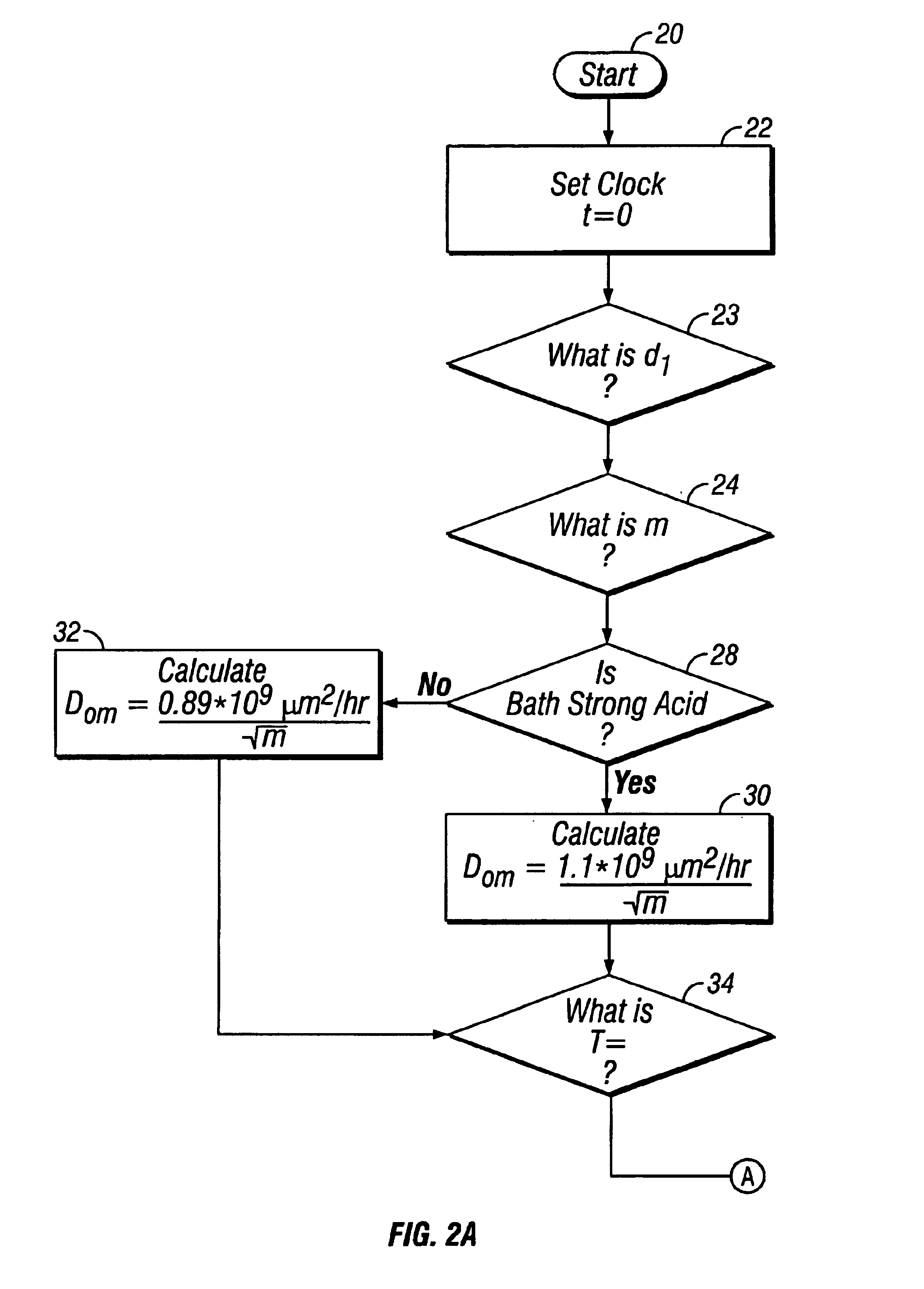Articles useful as optical waveguides and method for manufacturing same
a technology of optical waveguides and optical waveguides, which is applied in the direction of optical waveguide light guides, optical elements, instruments, etc., can solve the problem of altering the output intensity of the waveguid
- Summary
- Abstract
- Description
- Claims
- Application Information
AI Technical Summary
Benefits of technology
Problems solved by technology
Method used
Image
Examples
example 1
[0035]Optical waveguides were prepared as follows. A LiNbO3 substrate ({circumflex over (Z)}-cut) was immersed in a bath of deuterated sulfuric acid (98% purity (Aldrich)) located in an oven. The oven temperature was ramped from 23° C. at a rate of 0.5° C. / min to a temperature of 160° C., held at 160° C. for a period of about 190 minutes and cooled to a temperature of 20° C. at a rate of 1° C. / min. The etched substrate was rinsed with distilled water to remove excess acid. The deuterium ion exchange depth was calculated to be 0.19 um.
[0036]The treated substrate was then placed in an oven, and the oven temperature was ramped from 23° C. to 360° C. at a rate of 1° C. / min, held at 360° C. for a period of two hours, and cooled to 20° C. at a rate of 1° C. / min under an atmosphere of dry oxygen.
[0037]The treated substrate was then subjected to a second anneal in which the temperature of the oven was ramped from 23° C. to 360° C. at a rate of 1° C. / min, held at 360° C. for a period of four...
example 2
[0039]A 2001 Å layer of SiO2 was deposited on a 1 in.×0.3 in. LiNbO3 wafer, patterned using lithographic techniques, and etched using a reactive ion etch to expose a pattern of the LiNbO3 substrate. The etched substrate was then cleaned with acetone.
[0040]The LiNbO3 substrate was then immersed in a bath of deuterated sulfuric acid (98% purity (Aldrich)) located in an oven. The oven temperature was ramped from 23° C. to 160° C. at a rate of 0.5° C. / min, held at 160° C. for a period of 191 minutes, and cooled to a temperature of 20° C. at a rate of 1° C. / min. The etched substrate was rinsed with distilled deuterated water to remove excess acid. The deuterium ion exchange depth was calculated to be 0.19 um.
[0041]The treated substrate was then annealed by placing the substrate in an oven, and ramping the oven temperature from 23° C. to 360° C. at a rate of 1° C. / min. The oven temperature was held at 360° C. for a period of four hours and then cooled to 20° C. at a rate of 1° C. / min unde...
PUM
| Property | Measurement | Unit |
|---|---|---|
| Structure | aaaaa | aaaaa |
| Electric properties | aaaaa | aaaaa |
| Magnetism | aaaaa | aaaaa |
Abstract
Description
Claims
Application Information
 Login to View More
Login to View More - R&D
- Intellectual Property
- Life Sciences
- Materials
- Tech Scout
- Unparalleled Data Quality
- Higher Quality Content
- 60% Fewer Hallucinations
Browse by: Latest US Patents, China's latest patents, Technical Efficacy Thesaurus, Application Domain, Technology Topic, Popular Technical Reports.
© 2025 PatSnap. All rights reserved.Legal|Privacy policy|Modern Slavery Act Transparency Statement|Sitemap|About US| Contact US: help@patsnap.com



